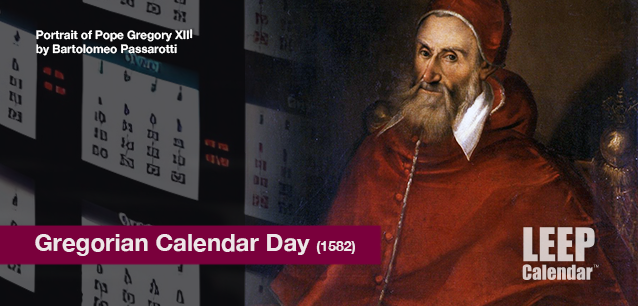 AD
AD
Country
- Africa
- Alcohol, Tobacco & Drugs
- Animals, Fish, Insects & Birds
- Anniversaries
- Australia
- Books
- Brazil & S.America
- Buddhism
Category
- Afghanistan, AF
- Aland Island, AX
- Albania, AL
- Algeria, DZ
- American, Samoa, AS
- Andarra, AD
- Angola, AO
- Anguilla, Al
Event Type
- Daily
- Weekly
- Annual
- Recurring
Duration
- All
- 1 Day
- 2 Day
- 3 Day
- 4 Day
- 5 Day
- 6 Day
Event Type
- Daily
- weekly
- Annual
- Recurring
Event Type
- Daily
- weekly
- Annual
- Recurring
Today is: May 06
Asthma Day, World
Beverage Day, Ntl.
Joseph Brackett Day (1797)
Management Accounting Day, Intl.
No Diet Day, Intl.
No Homework Day
Poem on Your Pillow Day
Registered Nurses Recognition Day, Ntl.
Teachers Day, Ntl.
Tourist Appreciation Day, Ntl.
Anxiety and Depression Awareness Week, Ntl.
Be Kind to Animals Week
Black Mothers Bailout Week
Children's Book Week
Children’s Mental Health Awareness Week (US/CA)
Computer, Choose Privacy Week
Deaf Awareness Week (UK)
Donkey Week (UK)
Drinking Water Week
Dying Matters Awareness Week (UK)
Emergency Preparedness Week, Ntl. (CA)
Facilities Managers Week, World FM
Family Week, Ntl
Galveston Historic Home Tour (US-TX)
Goodwill Industries Week (US/CA)
Heart Week (AU)
Hedgehog Awareness Week (UK)
Hug Holiday Week, Ntl.
Hurricane Preparedness Week, Ntl.
Maternal Mental Health Week
Mental Health Awareness Week (CA)
Motherless Daughters Awareness Week (AU)
Music Week, Ntl.
Neuropathy Awareness Week, Peripheral, Ntl.
Nurses Week, Ntl.(1820)
Occupational Safety and Health Week, (US/CA/MX)
Pet Week, Ntl.
Physical Education and Sports Week, Ntl.
Public Service Recognition Week
Puppy Mill Action Week
References Week, Update Your
Substitute Teacher Appreciation Week (SubWeek)
Summer Safety Week, Ntl.(CA)
Teachers Appreciation Week
Time for a Cuppa (UK)
Travel and Tourism Week, Ntl.
65 Roses Month (AU)
ALS Awareness Month
Amaranth Month
Arthritis Awareness Month, Ntl.
Asian and Pacific Islander American Heritage Month
Asparagus Month, Ntl.
Asthma and Allergy Awareness Month
Barbecue Month, Ntl.
Bike and Bicycle Safety Month
Blood Pressure Month, Ntl.
Borderline Personality Disorder Awareness Month
Brain Tumor Action Month
Building Safety Month, Ntl.
Cancer Research Month, Ntl.
Car-Keeping Month, Ntl. Good
Celiac Awareness Month (CA)
Cheese Month, American
Chocolate Custard Month
Civility Awareness Month, Global
Civility Awareness Month, Intl.
Civility Awareness Month, Intl.
Clap 4 Health Month
Coeliac Awareness Month (UK)
College Students with Disabilities Recognition Month
Condiment Month, Ntl.
Condiment Month, Ntl.
Craft and Design Month (2011)(UK)
Crohn's and Colitis Awareness Month (AU)
Cystic Fibrosis Month
Dhul-Qa'dah (M)
Digestive Diseases Awareness Month, Ntl.
Egg Month
Electrical Safety Month, Ntl.
Employee Health and Fitness Month, Global
Family Wellness Month
Fibromyalgia Education and Awareness Month
Food Allergy Action Month
Foster Care Month, Ntl.
Garden Month, Gifts from the
Gardening for Wildlife Month
Get Caught Reading Month
Haitian Heritage Month
Hamburger Month, Ntl.
Heal the Children Month
Healthy Vision Month (US)
Hearing and Speech Month, Better
Hemochromatosis Awareness Month (CA)
Hepatitis Awareness Month, Ntl.
Hereditary Hemochromatosis Genetic Screening and Awareness Month, Ntl.
High Blood Pressure Education Month, Ntl.
Huntington's Disease Awareness Month (CA)
Huntington's Disease Awareness Month
Inventors Month, Ntl.
Iyyar (J)
Jewish-American Heritage Month
Lung Cancer Awareness Month (AU)
Lupus Awareness Month, Ntl.
Lyme Disease Awareness Month
ME/CFS Awareness Month (US-CA)
Meat Free May (UK)
Medication Dependence Prevention Month (AU)
Meditation Month, Ntl.
Mediterranean Diet Month, Intl.
Mental Health Month, Ntl.
Microchip Your Pet Month (US)
Military Appreciation Month, Ntl.
Motorcycle Safety Month (US/CA), Ntl.
Mystery Month
Neurofibromatosis Awareness Month, Ntl.
Older Americans Month
Osteoporosis Prevention Month, Ntl. (US)
Our Lady of Peace and Good Voyage, Feast of (PH)
Pediatric Stroke Awareness Month, Ntl.
Pet Cancer Awareness Month, Ntl.
Pet Month, Ntl.
Photography Month, Ntl.
Physical Fitness and Sports Month, Ntl.
Physiotherapy Month, Ntl. (CA)
Posture Month
Preservation Month, Ntl.
REACT Month
Read to Your Baby Bump Month, Ntl.
Recommitment Month, Ntl.
Responsible Animal Guardian Month
Running of the Balls (US-TN)
Salad Month, Ntl.
Santacruzan, Flores de Mayo (PH)
Service Dog Eye Examination Month, Ntl.
Sexual Assault Awareness and Prevention Month, Ntl.
Skin Cancer Detection and Prevention Month
Sleep Month, Better
Spiritual Literacy Month
Stroke Awareness Month, Ntl. (US)
Stroke Month, Strike Out
Sweet Vidalia Onion Month, Ntl.
Tavern Month, Ntl.
Teen Self-Esteem Month, Ntl.
Thyroid Awareness Month (AU)
Tooth Month, Save Your
Toxic Encephalopathy and Chemical Injury Awareness Month, Ntl.
Trade Month, World
Triple Crown
Tuberous Sclerosis Awareness Month
Ultraviolet (UV) Awareness Month
Urgent Care Awareness Month, Ntl.
Vaisakh (S)
Vaisakh (S)
Vaisakha (H)
Victorious Woman Month Intl.
Vinegar Month
Vision Health Month (CA)
Walk in the Woods Month (UK)
Walking Month, Ntl. (US/UK)
Wetlands Month, American.
Women's Health Care Month, Ntl.
World Expo 2025 (JP)
Young Achiever's Month
Youth Services Month, Global
Youth Traffic Safety Month, Global
LEEP Calendar
Scroll to explore events active on this date.
Additional Events on LEEP
LEEP INK FEATURES

Events in April 2025
Spring has sprung in the north, and the first hints of Autumn are on the horizon in the south. April is the month spring (or fall) gets underway, and it is filled with religious celebrations, including the Mu...

Metamorphic March: Trends and events in March 2025
Welcome to Spring or Autumn. This is a transitional month with something for everyone. Internationally, it is Women's History Month, focusing on the achievements, needs, and challenges that women ...

February Favorites
The world steps into the second month of 2025 with hope and trepidation. The United States has a new administration. Canada is finding its way to a new administration. Germany and several other European nations...
About Gregorian Calendar Day
Finance & Banking
Ends: Feb 24, 2025
DESCRIPTION:
On February 24, 1582, Pope Gregory XIII established the Gregorian calendar via a Pappel Bull, the primary calendar used today and underlying international commerce.
The new calendar went into effect on October 4, 1582. In 1752 it became the official calendar throughout most of Europe and the empire colonies. Russia, a holdout, started using it in the 20th century.
The Julian calendar, which the world was using, was created by Julius Cesar. It had a problem, though. It wasn't accurate. Every year it was off by 11.5 minutes. Over centuries, 11 minutes per year adds up. When Pope Gregory established the new calendar, Cesar’s was ten days off.
The Julian calendar added an extra day every four years to account for the extra quarter day it takes the sun to rotate around the earth. We call this a "leap year." This idea may have come from the Hebrew calendar, which adds a thirteenth month, Adar II, to account for the difference between the moon and sun rotations in its leap years.
The Gregorian calendar addressed the missing 11.5 minutes and split time into two eras: before the birth of Jesus Christ (BC) and after the nativity, or anno Domini (AD), "the [first] year of our Lord" in Latin. Of course, non-Christian religions and secularists didn't like this, so they changed it to "Before the Common Era" (BCE) and "Common Era" (CE). No matter what you call it, the demarcation point is still the same: the birth of Jesus Christ.
Orthodox Christians still use the Julian calendar (off by 11 days when the Gregorian calendar was adopted globally in 1752) as their religious calendar, which is why you'll find two different celebrations of Easter and Christmas each year. Other religions use their calendars, most of which follow the movements of the sun, moon, and-or stars. These calendars are shorter than the Gregorian, now the international standard.
The oldest calendar in the world is the Byzantine calendar, which began marking time over 7,500 years ago.
VIDEOS
Currently, this event does not have supporting videos.
SUPPORTING DOCUMENTS
Currently, this event does not have supporting documents.
ADDITIONAL IMAGES
Currently, this event does not have supporting images.
Where would you like to go now?
 AD
AD
By using this site. You are agreeing to use of cookies. Learn more in our Privacy Policy
/footer-logo.svg)
LEGAL: Excerpts and links may be used, provided that full and clear attribution is given to Jubilee LLC and LEEPCalendar.com, with appropriate and specific direction to the original content (Page URL). Additional documents, embedded videos and additional image rights retained by their creators and are provided to increase understanding of the event or topic.
Jubilee LLC reserves the right to accept or reject inclusion of events in this calendar. The appearance of an event in LEEP Calendar does not imply endorsement of the event, nor the organization championing the event by Jubilee LLC, its stakeholders, customers or subsidiaries. All dates, contact information, URLs, addresses, and information relating to any event, promotion or holiday are subject to change without notice and should be treated as estimated. Jubilee LLC, our stakeholders, customers and subsidiaries cannot warrant accuracy. Users of this application are solely responsible for verifying actual event date with organizers and additional sources prior to committing resources, financial, human or otherwise.


